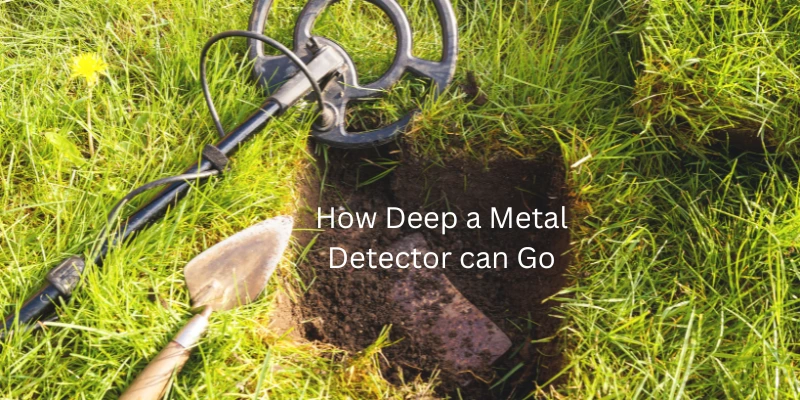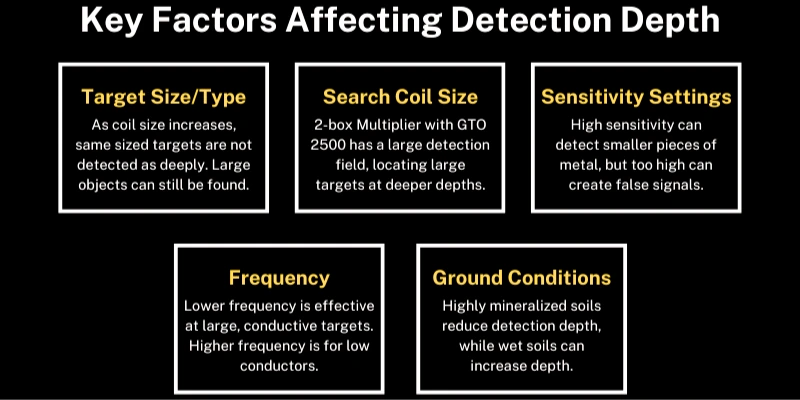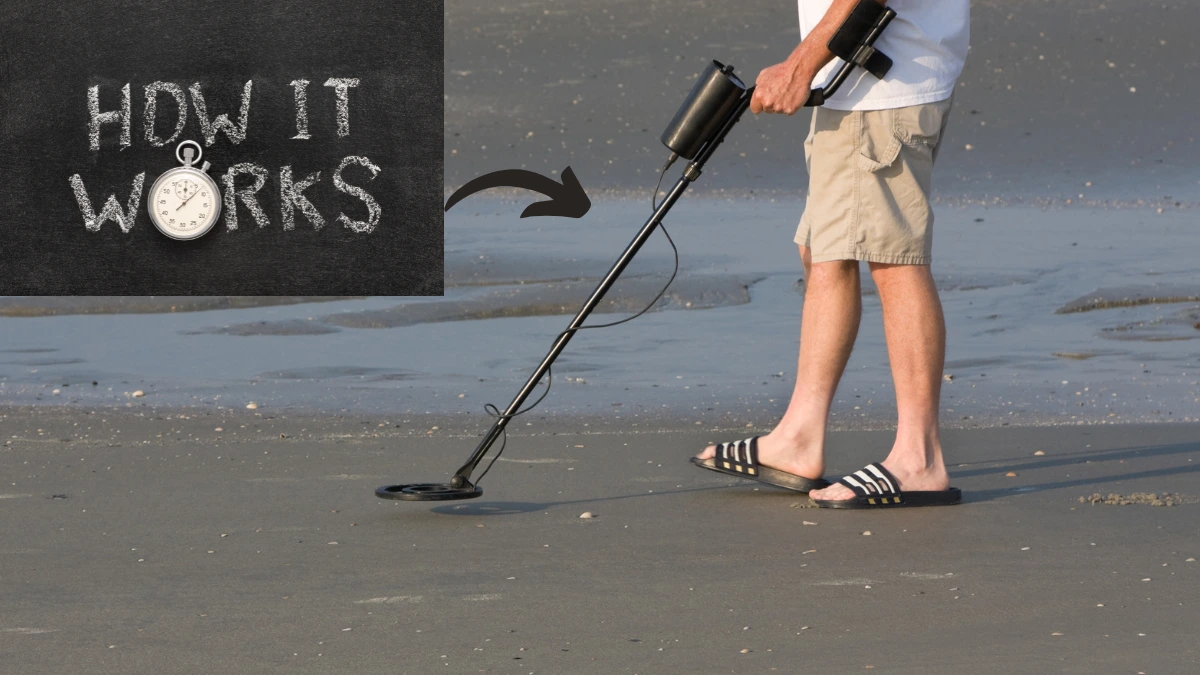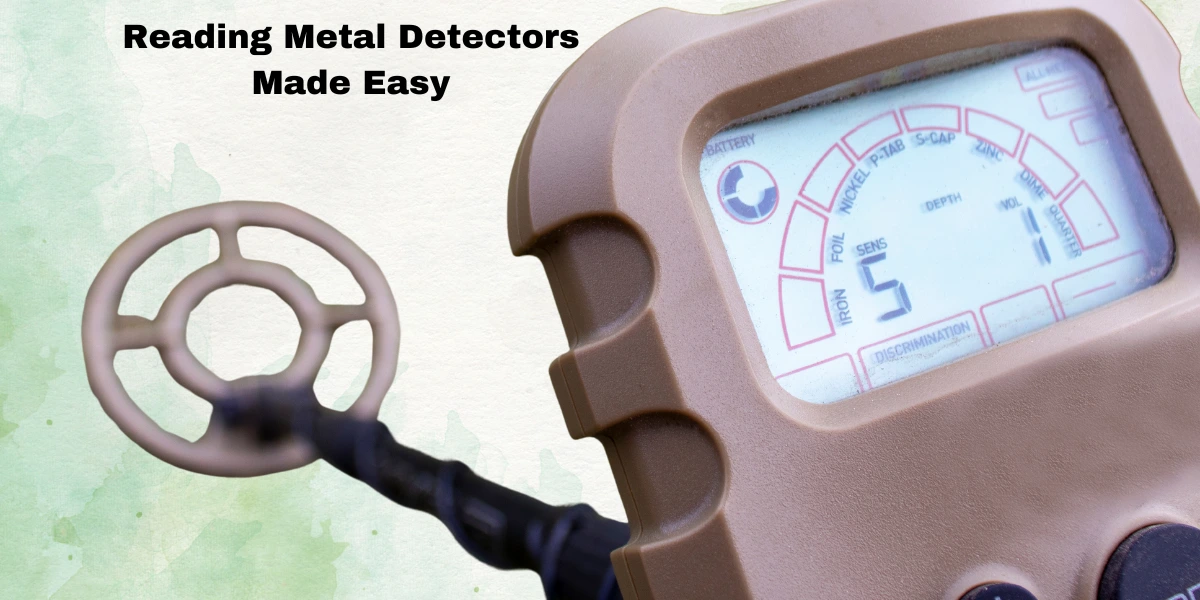Curious About How Deep a Metal Detector Can Go? Let’s Find Out!
Published: 16 Sep 2024
Metal detectors have multiple uses today, ranging from finding treasures to archaeology, security, construction, and many others. An aspect that most people are confused about is how deep a metal detector can go. For a variety of reasons, it’s not easily answered how deep a metal detector can pick up objects.

This blog will easily explain these factors and give real-world advice about the depth of metal detectors. For amateurs or even professionals, this piece of writing is going to be helpful and increase the chances of success.
How far down can a metal detector detect? Key Factors
1. Type of Metal Detector
There are several types of metal detectors, and their capabilities vary significantly:
- Very Low Frequency (VLF): These are often used by enthusiasts and are meant to operate within shallow to moderate depths, up to 6-10 inches (15-25 cm). VLF detectors are very effective for discriminating between different types of metals.
- Pulse Induction (PI): PI detectors are more recognized for penetrating deeper into the ground and can detect metal objects at a depth of up to 2 feet (60cm) or more. These detectors are typically employed on a mineral-containing surface or a beach where depth sensing is more critical.
- Multi-frequency Detectors: These advanced models add these frequencies, making them flexible enough to detect shallow and deep objects. They can cover a broad range of depths, but they average at VLF detectors at the lower end and PI detectors at the upper end.
2. Size and Composition of the Target

The size and type of the metal object play a crucial role in how deep it can be detected:
- When objects of large size are concerned, they are identified more easily at larger depths. For example, a large object such as a metal part or a treasure box might be discovered at 3 feet or more, while a small coin might only be detectable within 6 to 12 inches (15-30 cm).
- The metal composition also matters. Highly conductive metals like silver and copper are more easily detected at deeper levels than less conductive metals like stainless steel or aluminium.
3. Soil Composition
Soil composition also affects how deep a metal detector can detect objects:
- Mineralized soil (rich in iron or salt) usually interferes with metal detector signals and reduces its depth penetration capabilities. Although some detectors have additional settings and can somewhat mitigate this, the depth will still be affected.
- Wet or Damp soil generally improves detection depth as moisture helps conductivity, making it easier to detect metals deeper underground.
- Compacted soil can also affect a metal detector’s deep detection ability. Dense materials make it difficult for the detector’s signal to penetrate.
4. Coil Size and Shape
The search coil is one of the most important parts of the metal detector. It is mainly responsible for sending and receiving signals. The coil’s size and shape directly influence the detection depth:
- Larger coils can detect metals deeper. They sometimes reach a depth of up to 3 feet (90 cm) for larger objects. But in this case, they might sacrifice some sensitivity to smaller items.
- Smaller coils are generally used for shallow detecting. they provide higher sensitivity to smaller objects, such as coins or jewelry, but are not very effective for deeper objects.
General Depth Ranges for Metal Detectors
While the factors listed above affect depth, here’s a general idea of how deep metal detectors can detect objects based on their type:
| Type of Metal Detector | Maximum Depth (Typical Objects) |
| Very Low Frequency (VLF) | 6-10 inches (15-25 cm) |
| Pulse Induction (PI) | 12-24 inches (30-60 cm) |
| Specialized Deep-Seeking Models | 3 feet or more (90+ cm) |
You can choose a metal detector that fits your requirements. The amateurs can go for VLF whereas the specialists have the option of Deep Seeking models that can go up to the depth of 10 feet.
Tips and Techniques For Enhancing Depth Detection
- Choose the Right Detector: It is very important to select the right metal detector. Based on the above criteria, you should decide what type of metal detector you need. The right selection will surely increase your chances of success.
- Coil size: Due to their high sensitivity, small coils are generally recommended for shallow metal detection, while a larger coin must be used for deeper detection.
- Adjust Sensitivity Settings: You must adjust sensitivity according to your needs. To do so, one must know how to adjust sensitivity. Generally, good quality detectors allow you to increase sensitivity to boost depth detection. However, this increases the chances of false positives in mineralized soil.
- Practice Ground Balancing: Ground balancing is critical to avoid mineralized soil and target real metals. You must focus on ground balancing if you are hunting in mineralized soil
- Search in Moist Soil: The chances of metal detecting increases in moist soil. Therefore, it is recommended that you should start hunting right after rain.
Frequently Asked Questions
What Frequency Detects Gold?
High-frequency detectors can easily detect gold, which moves between 14 kHz and 50 kHz or even higher. Low frequency (5-15) is used for detecting metals like silver or copper. As the gold remains in small nuggets or fine flakes, it will need a higher frequency to be detected.
What is the Reality of Going Higher Frequency for Metal Detecting?
Higher-frequency detectors are used to detect smaller, low-conductivity materials like gold or small pieces of jewelry. Lower frequencies, in contrast, provide greater depth and are better for detecting larger, more conductive targets like silver.
Can metal detectors detect gold at great depths?
Metal detectors can detect gold at great depths, but this requires specialized detectors. Pulse induction models are most famous for treasure hunting as they can detect gold nuggets at depths ranging from 12 inches to 3 feet, depending on the size of the nugget.
Does weather affect metal detector depth?
Yes, weather can influence detection depth. Moisture in the soil after rainfall allows a metal detector to go to a deeper depth. While very dry soil may reduce the chances of deep detection.
Can I detect objects deeper than 3 feet?
Yes, it is possible to detect objects deeper than 3 feet with the help of Deep-Seeking models of metal detectors. These models are designed for professional use and can detect up to 10 feet or more.
Understanding metal detectors’ capabilities and limitations can improve your chances of success, no matter what you’re searching for.
Concluding Words
How deep can a metal detector go? This is a question that is still of concern to many. There is no single-line answer to this question, as multiple factors affect the depth of the metal detectors. Some of the critical factors are the type of detector, the size and composition of the object, the soil composition, and the size of the search coil. Most of the time, the hobbyist detectors can find objects up to 12 inches, while specialized models can detect metal up to a depth of 10 feet or more.
For those serious about deep-seeking, investing in the right equipment and learning how to adjust for soil conditions will significantly improve your success. Understanding the limitations and maximizing your setup will increase your chances of finding those precious buried treasures.

- Be Respectful
- Stay Relevant
- Stay Positive
- True Feedback
- Encourage Discussion
- Avoid Spamming
- No Fake News
- Don't Copy-Paste
- No Personal Attacks

- Be Respectful
- Stay Relevant
- Stay Positive
- True Feedback
- Encourage Discussion
- Avoid Spamming
- No Fake News
- Don't Copy-Paste
- No Personal Attacks





